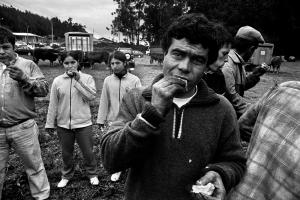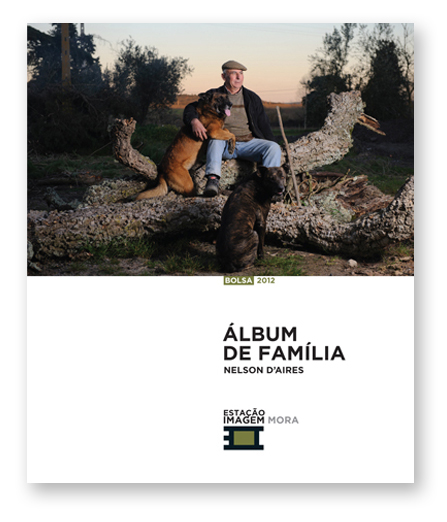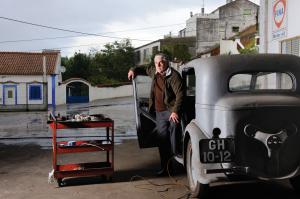A photograph is always a mental image. Or, in other words, our memory is just made of pictures.
Philippe Dubois in “The Photographic Act and other essays”.
“A morte é uma flor que só abre uma vez” [“Death is a flower that blossoms only once”] is the first verse of a Paul Celan’s poem and something that I had present many times throughout this work. It is as if every time someone once photographed by AGP dies, it also buries a part of the collective heritage of Mora and with it AGP’s work path. Memory is a vulnerable thing and to preserve it calls out for a constant sprint against time. To study and to properly archive the work of a photographer as AGP was is then a matter of urgency and the support of everyone is key to achieve it.
Not having met AGP personally while he lived is obviously a permanent gap in any research attempt about his work. Faced with the urgency of finding the largest number of people that were photographed by AGP and that were still alive today, I decided to focus my effort around the book published in 2003 – conceptually, it was impossible to ignore this long term work, the invaluable and selective look contained in it.
This book became the centre of my world. I searched and photographed its characters. I passed it through different hands, eyes, and ears, always in the hopes of an identification and address. Invariably, I carried the book at all times continuously thinking about the new revelations and relations; it became a steady family album, revisited again and again while it got wider and deeper with each new story, encounters and missed encounters. After a short while I was no longer the photographer asking for information but also the informant, the one recounting news about those whose track had been lost along the years.
Apart from the portraits now developed, I was also interested in finding the contact prints which AGP normally handed in to his clients. Doing this allowed me to dive deeper inside the lives of the original family albums, in that ‘paper house’ where people store their history. At the same time, I understood the impact left by the absence of a community photographer. Family albums have become emptier. All this while photographs are now more common than ever, and despite today’s easy access to different devices. The pictures made these days are sent in digital formats instead of printed - in a way, hanging in that instability of things that never fully materialise.
This book does not close my work as I need to linger a while in Mora. To linger because it is time doing the choosing of what remains in time. And because we need to choose with the time, as if explaining what matters most to us and what identifies us with dignity and pride.
Nelson D’Aires
April 2013
x







